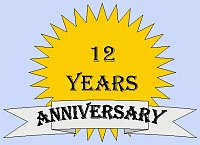V is for Verbal Violence
by Jonathan Mills
Jonathan Mills examines how Alan Moore and David Lloyd's V for Vendetta creates a unified language of words and images.
A bulky stumbling block in the way of addressing graphic novels as a visual literature is the question: how can words and images be integrated? How can one critical language make sense of the relationship between these two disparate units?
This question is an important part of Scott McCloud's meta-comic Understanding Comics. He first presents the often-isolated creators of comics, the writer and artist, then shows how the mastery of their respective arts further isolates them on the spectrum of abstraction. The art in comics is increasingly tied to mimesis, and writing progresses in a more elaborate and abstract form. However, Alan Moore and David Lloyd's V for Vendetta manages to bridge these concerns thanks to its careful wordplay and deconstructive story arc.
Editor's NoteAlan Moore is an English writer and performance artist. He is best known and has been most influential through his work in comics, most notably Watchmen, V for Vendetta, and From Hell, all of which have been made into critically and commercially successful films. Moore is notable for bringing literary and formalist sensibilities to mainstream comics as well as his willingness to explore challenging subject matter and adult themes.
V for Vendetta is a valuable graphic text not merely for the quality of the story and art, but also because the dramatic sequence of narrative events is so dependent on both verbal and visual symbols. Indeed, through the course of the plot, language and images become symbolic participants in the tale. Moore's deft symbiosis of the written word with Lloyd's graphic storytelling provides groundwork for a critical vocabulary of the graphic novel form.
The text of V for Vendetta, necessarily composed of both words and images, illuminates three principles of the visual experience of graphic novels. First, V's war against the tyrannical government is a battle against the supremacy of the state's linguistic institutions and empty voice. Second, the story demonstrates that letters and words are graphic representations, further undercutting and problematising the position of the written word in culture. Third, through the conclusion of V for Vendetta, the marriage of graphics and words reigns supreme over the culture both within the story and beyond it.
'The marriage of graphics and words reigns supreme...' |
The totalitarian society that V opposes is just that - the linguistic and institutional system that controls all of Britain. The fascists have destroyed all culture aside from that which they now produce; didactic drivel like "Storm Saxon." V's violent behaviours attempt to replace these cultural systems with his own, as when he hijacks the television station and sends out his own message to the people of Britain (112-7). V's fight against tyranny is allegorical to a text's interaction with the environment of its production. However, Moore and Lloyd's graphic novel is not limited to Lupton and Miller's explanation; the use of literally graphic themes and images works alongside the words to reaffirm the value of language.
The language of the text is subjected to many of the same interpretive principles as the other images, and the role of the written word is further undermined in Chapter Two of Book One, 'The Voice'. The totalitarian government of Great Britain is guided by a supercomputer called Fate. The state-owned radio program broadcasts 'The Voice of Fate'; a propagandistic and reassuring lecture to the people of Britain. The Voice, as the announcer is known, is the representative for the system on a number of levels. He is thus a prime candidate for the attentions of V, who abducts him and subjects him to the same psychological horrors that V himself endured. The Voice is broken, and the regime loses an important battle for public perception. Later, V successfully eliminates all elements of the state's broadcasting mechanism, prompting the Leader to lament; "He's taken it. He's taken away the voice of Fate. ... How shall my country fill the silence?"
V's fight also operates against language on another plane. Much of V for Vendetta is exclusively graphic; the action moves kinetically from scene to scene. A clear contrast in the early part of the graphic novel is how willing V is to simply act, while the members of the state are mostly engaged in dialogues about the terrorist actions. To an extent, in this case, the artwork is in opposition to the language. While Fate tries to maintain control with performative speech acts, merely declaring its own control, V successfully disproves Fate's statements by visually identifiable acts of violence. 'Doing' is often more valuable to V than 'talking', and here the limits of language appear.
 V's own command of language is incredibly valuable as well, however. V's training of Evey, an essential component of his personal crusade, occurs largely through his dialogue with her. Here, V conveys ideas, educating Evey about the hostile world around her. His language is of incredible value, as it relays information across the gap in Evey's and V's experiences. The components of the state, on the other hand, engage in bickering, misunderstanding, and other failures of communication. In many ways, V's fight with Fate is a battle over controlling communication. His terrorist activities are always communicative - either disrupting the communication between the tyrannical government and the people, or sending a message beyond the system and directly to the populace.
V's own command of language is incredibly valuable as well, however. V's training of Evey, an essential component of his personal crusade, occurs largely through his dialogue with her. Here, V conveys ideas, educating Evey about the hostile world around her. His language is of incredible value, as it relays information across the gap in Evey's and V's experiences. The components of the state, on the other hand, engage in bickering, misunderstanding, and other failures of communication. In many ways, V's fight with Fate is a battle over controlling communication. His terrorist activities are always communicative - either disrupting the communication between the tyrannical government and the people, or sending a message beyond the system and directly to the populace.
That V also engages in a variety of clever cultural exchanges with Evey, including a theatrical mock-torture scene, proves his commitment to expression. A very important realisation brought on by V for Vendetta is one that is literally obvious enough, but often taken for granted. Just like a drawing of a city or a mathematical symbol, words too are visual representations of things. Most interpretive or historical studies of comics point out that ancient linguistic symbols like Egyptian hieroglyphs and Chinese characters possess a mimetic quality. "As their employment becomes more sophisticated," writes Will Eisner in Comics and Sequential Art, "they become more simplified and abstract," yet they still retain much of their original style. Scott McCloud's study of comics' iconic status develops the argument even further. Though from their initial creation comics have used words in a visual way alongside images, V for Vendetta deconstructs written language even further. The significant symbol for this process is, of course, V.
The use of the letter V throughout V for Vendetta is quite flagrant. In addition to being the name of the principal character, V is also a recurring element both within the text and in the narrative frame that creates it. Outside of the story line, V appears far more often than on just the title page. Every chapter heading, about thirty in all, begins with the letter V - 'Virtue Victorious', 'Video', 'Vox Populi' and so on. V for Vendetta uses the letter V as a sort of literary touchstone. This symbol frequently reappears amidst the everyday language of the dialogue. V must not merely be a title or a person in the story; it must also retain its original function - as a letter, as a part of words.
The most dramatic appearances of the letter V, however, are within the story. From his first violent act of destroying the Parliament building through his vindictive attacks on individuals, V commemorates his triumphs with a visible icon that lets the Londoners know he is responsible. The first brilliant display occurs during the aforementioned Parliament bombing, when he sets off fireworks that form a giant V in the sky. The more frequently used symbol is reminiscent of the icon used for anarchy: a V with a circle around it.
As V's notoriety grows, others begin to emulate the symbol and use it as a personal protest. V evolves from a simply name to a graphic symbol for that person to a representation of an ideal. As the graphic novel progresses, a new language is being written: one that recognises the value of graphic symbolism in reconstructing language, even as it maintains the non-mimetic tradition of most advanced languages.
'As the novel progresses, a new language is being written.' |
The wounds that V has sustained are fatal, however. The man will die, but V will live on through Evey. As he dies, she adopts his costume, without exposing his identity. Though the man, the character, dies, V lives on. Evey wears the Guy Fawkes mask and continues V's teachings, extending his terrorism and even adopting a protégé of her own.
Though the character who occupied V's form for the entire graphic novel has died, everything that is V - the symbols, the rhetoric, the action - is still present. In fact, after all of the drama and violence, the only thing that remains intact is the language of the construction and deconstruction of British society. The face behind the mask keeps changing, but the ideas, symbols, and meanings retain their power. V manages to incorporate, to bodily represent in the text, both elements of the written word and the power of the visual, all in a unified way. The text's willingness to be deconstructed as visual symbols both reaffirms literature and extends its usual practice. In its conclusion, V for Vendetta is the ultimate affirmation of the power of the visual written word.
Jonathan Mills is a graduating senior in Writing Seminars at Johns Hopkins University, USA.
Ninth Art endorses the principle of Ideological Freeware. The author permits distribution of this article by private individuals, on condition that the author and source of the article are clearly shown, no charge is made, and the whole article is reproduced intact, including this notice.
'Please to remember the fifth of November |
In the early morning hours of November 5th 1605, the plot by a small group of fanatical Catholic conspiritors to destroy Parlaiment and kill King James I was foiled.
 Thirty-six barrels of gunpowder had been hidden in a rented cellar under the Palace of Westminster ready to blow up the House of Lords that day during the State Opening of Parliament when the king would be in attendance. Guy Fawkes himself was seized as he attempted to ignite the gunpowder. The conspirators were executed for treason and the night of November 5th became an English national holiday.
Thirty-six barrels of gunpowder had been hidden in a rented cellar under the Palace of Westminster ready to blow up the House of Lords that day during the State Opening of Parliament when the king would be in attendance. Guy Fawkes himself was seized as he attempted to ignite the gunpowder. The conspirators were executed for treason and the night of November 5th became an English national holiday.Traditionally, Guy Fawkes Night or Bonfire Night (or Cracker Night or Fireworks Night or Bommy Night, depending on local tradition) has been celebrated by parades, fireworks, food, and bonfires for burning effigies of Guy Fawkes. Beginning in the early 18th century, children would cobble together odd looking or grotesque effigies of Guy Fawkes. The effigies were called 'Guys' and would have their faces either drawn onto the heads or else special Guy Fawkes masks  would be purchased and used instead. In the days leading up to Guy Fawkes Night, the children would then wheel or carry around their 'Guy' asking adults for 'a penny for the Guy'. The funds received would be used to purchase sweets and fireworks for the holiday evening.
would be purchased and used instead. In the days leading up to Guy Fawkes Night, the children would then wheel or carry around their 'Guy' asking adults for 'a penny for the Guy'. The funds received would be used to purchase sweets and fireworks for the holiday evening.
Traditional foods for Bonfire Night include jacket potatoes (whole potatoes) baked in the embers of the bonfire, bangers (sausages) cooked over the fire, Parkin Cake (a sticky cake made of oatmeal, ginger, treacle, and syrup), Bonfire Treakle (similar to peanut brittle but made with black treacle without the peanuts), and toffee apples (candied apples). Treacle is a generic name for sugar cane syrup. Black or dark treacle has a distinctively strong flavour and is slightly bitter, similar to dark molasses but not as dark or as strong tasting as blackstrap molasses. Molasses or treacle is the residual syrup left after the crystallized sugar is removed from sugar cane, sorghum, or sugar beet juice that has been concentrated by boiling. Dark molasses or black treacle comes from the second boiling of the syrup while blackstrap molasses comes from the third boiling of the syrup.
Home
Older Article: Perceptive and Vivid Accounts of Tudor Era England by Alison Weir










